What Are Alternatives To Bloom’s Taxonomy?
by TeachThought Staff
At the end of the day, teaching is about learning and learning is about understanding.
And as technology evolves to empower more diverse and flexible assessments forms, constantly improving our sense of what understanding looks like–during mobile learning, during project-based learning, and in a flipped classroom–can not only improve learning outcomes but just might be the secret to providing personalized learning for every learner.
This content begs the question: why does one need alternatives to the established and entrenched Bloom’s? Because Bloom’s isn’t meant to be the alpha and the omega of framing instruction, learning, and assessment. Benjamin Bloom’s taxonomy does a brilliant job of offering ‘verbs’ in categories that impose a helpful cognitive framework for planning learning experiences, but it neglects important ideas, such as self-knowledge that UbD places at the pinnacle of understanding, or the idea of moving from incompetence to competence that the SOLO taxonomy offers.
So with apologies to Bloom (whose work we love), we have gathered six alternatives to his legendary, world-beating taxonomy, from the TeachThought Learning Taxonomy, to work from Marzano to Fink, to Understanding by Design.
6 Alternatives To Bloom’s Taxonomy For Teachers
1. The TeachThought Learning Taxonomy
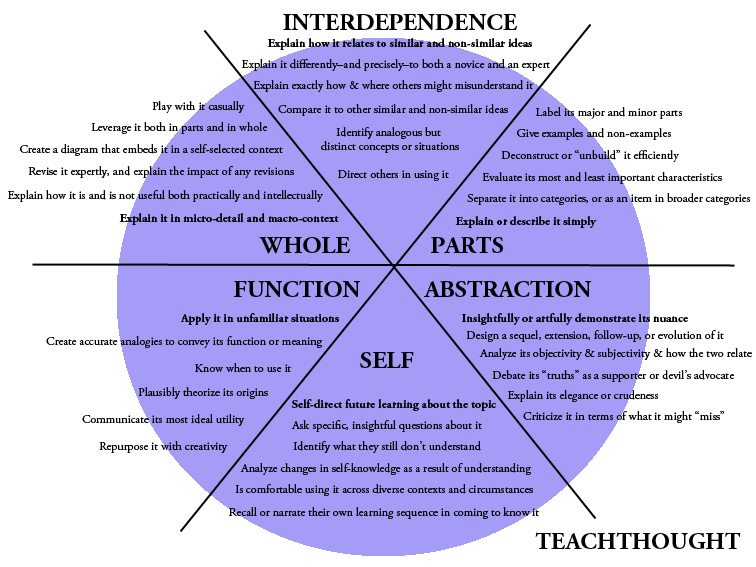
The TeachThought Learning Taxonomy orders isolated tasks that range from less to more complexity into six domains:
- The Parts (i.e., explain or describe a concept in simple terms)
- The Whole (i.e., explain a concept in micro-detail and macro-context)
- The Interdependence (i.e., explain how a concept relates to similar and non-similar concepts)
- The Function (i.e., apply a concept in unfamiliar situations)
- The Abstraction (i.e., demonstrate a concept’s nuance with artfulness or insight)
- The Self (i.e., self-direct future learning about the concept)
2. UbD’s Six Facets Of Understanding
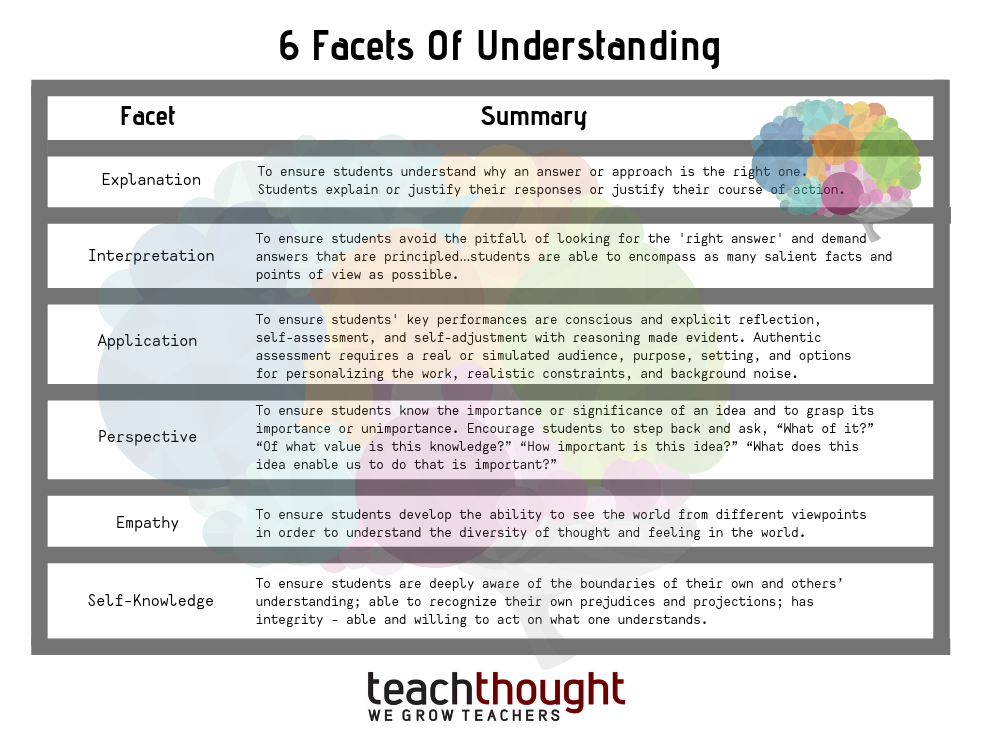
Created by Grant Wiggins and Jay McTighe to work with and through their Understanding by Design model, the 6 Facets of Understanding is a non-hierarchical framework designed to help teachers evaluate and assess student understanding.
3. Marzano & Kendall/Taxonomy
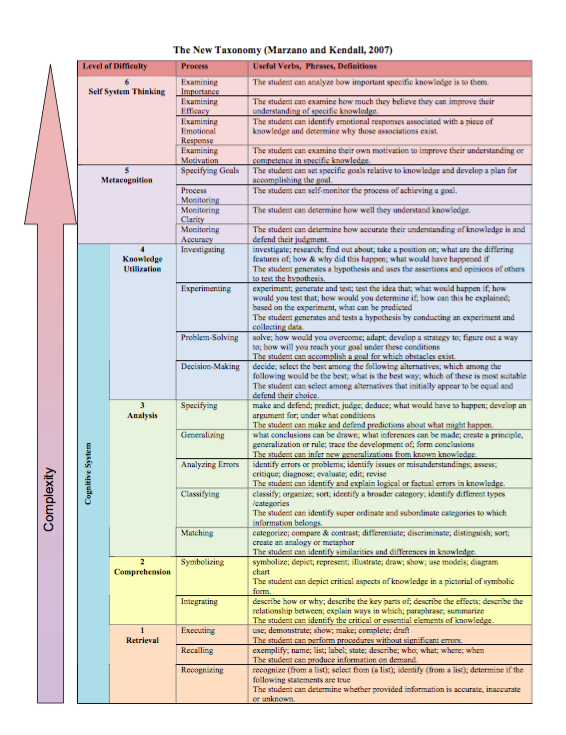
Marzano’s and Kendall’s taxonomy arranges a score of processes into six categories, from lowest to highest level of difficulty. Accompanying each category are verbs and phrases that may prove useful for teachers in designing assessments and evaluating mastery:
- Retrieval (i.e., executing, recalling, recognizing)
- Comprehension (i.e., integrating and symbolizing)
- Analysis (i.e., matching, classifying, analyzing, generalizing, specifying)
- Knowledge Utilization (i.e., decision-making, problem-solving, experimenting, investigating)
- Metacognition (i.e., monitoring accuracy, monitoring clarity, process monitoring, specifying goals, examining motivation)
- Self System Thinking (i.e. examining emotions, examining efficiency, examining importance)
4. The Taxonomy Of Significant Learning
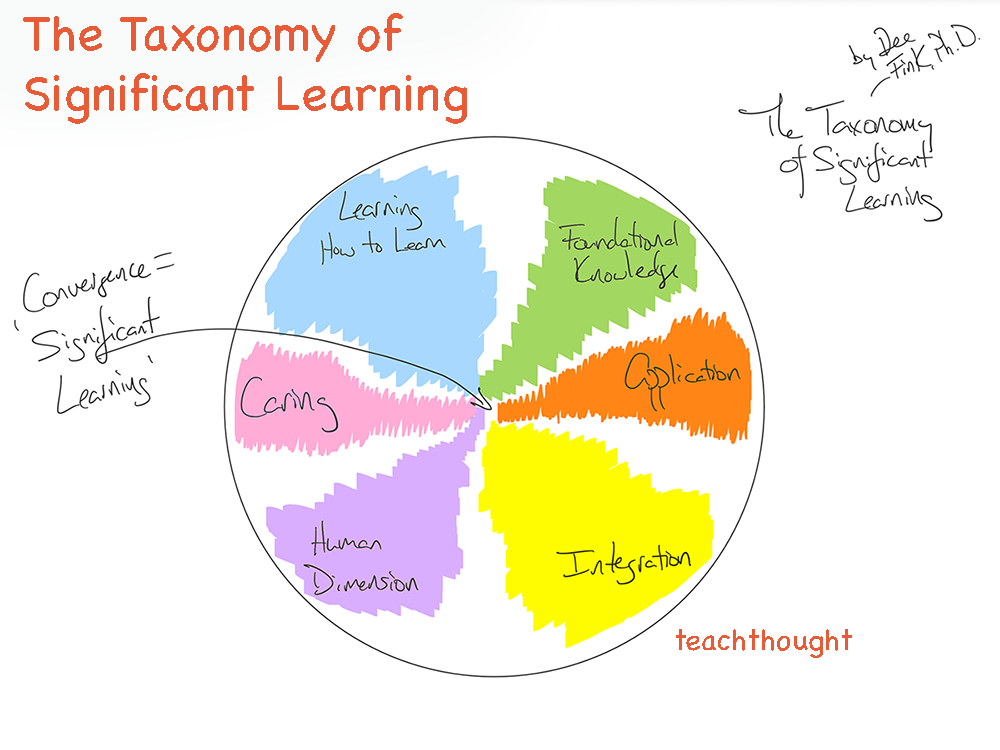
Dr. Dee Fink’s Taxonomy of Significant Learning describes attributes of ‘significant’ learning as opposed to ‘less significant’ learning (the former having greater endurance, resonance, and potential to improve student learning, and the latter being more classroom-centered and less relevant or applicable outside of the classroom). The center of the taxonomy is the ‘sweet spot’ of learning design.
5. Webb’s Depth Of Knowledge Framework
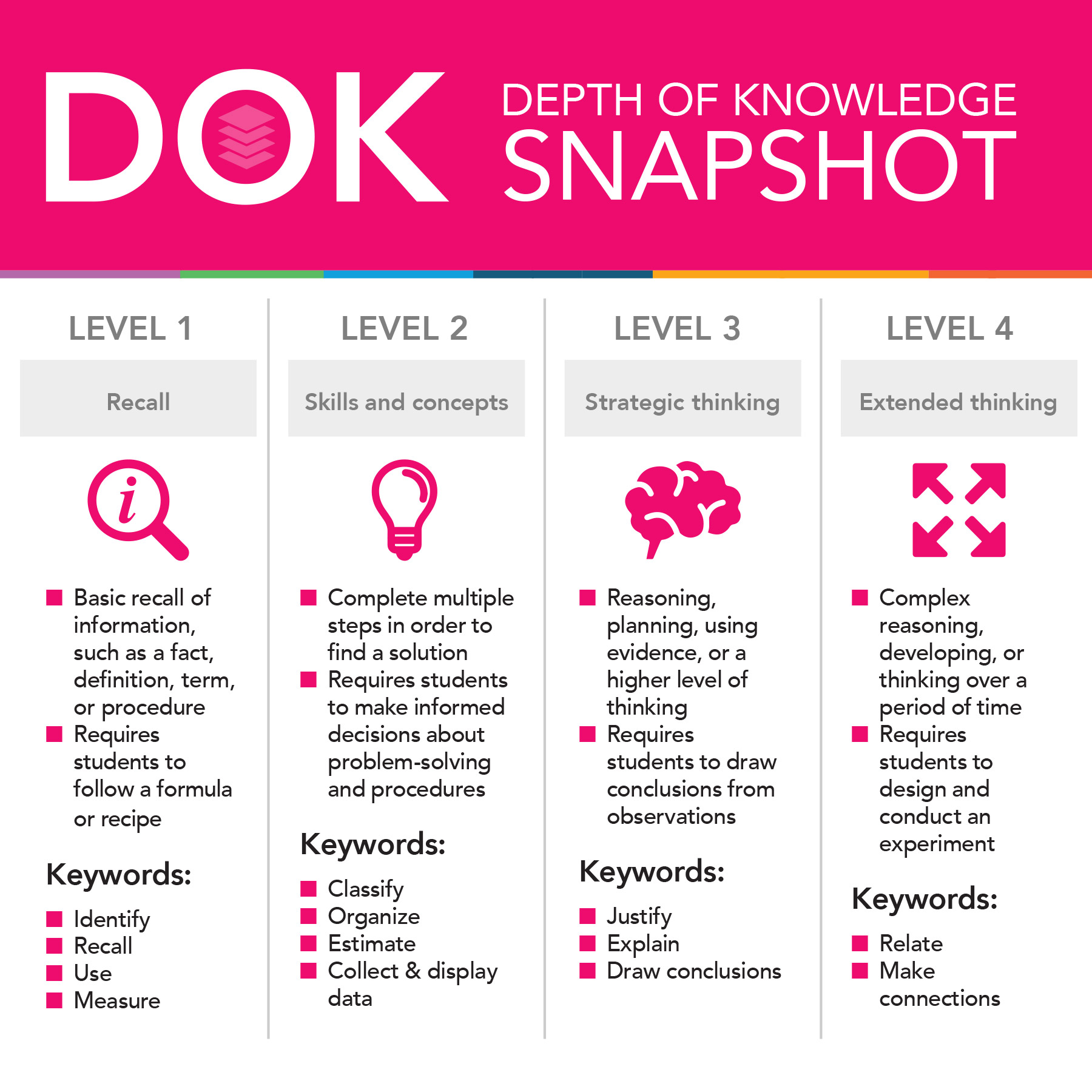
Webb’s Depth of Knowledge framework is designed to promote rigor, and organizes specific strategies and higher order thinking skills into four domains, moving from lower to higher complexity:
- Recall
- Skill/Concept
- Strategic Thinking
- Extended Thinking
6. The SOLO Taxonomy
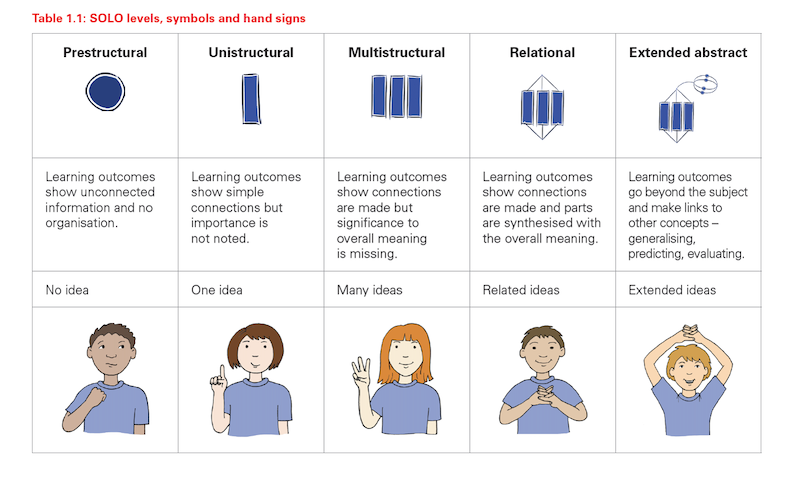
SOLO stands for the “structure of observed learning outcomes.” Created by John Biggs and Kevin Collis, the SOLO taxonomy is made up of five levels of understanding, as illustrated above. According to Biggs, “At first, we pick up only one or few aspects of the task (unistructural), then several aspects that are unrelated (multi-structural), then we learn how to integrate them into a whole (relational), and finally, we are able to generalize that whole to as yet untaught applications (extended abstract).”
